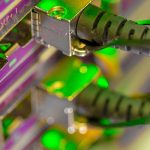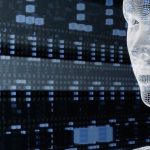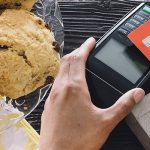Biometric verification means using unique biological traits to identify individuals. These traits include fingerprints, facial features, iris patterns, voiceprints, and signatures.
What’s the point of biometrics? In digital spaces, biometrics identify people through their unique characteristics. It’s a robust answer to the question: Who is this? Each person has distinct biological markers, making tampering difficult. That’s why biometric verification is seen as a trustworthy method for confirming identities and granting access in various settings, such as mobile devices, airports, restricted buildings, online banking, and fraud prevention efforts.
So, how do biometric systems actually work? First, these systems capture a person’s unique feature—like a fingerprint or a face—and save it in a database. When that person returns and needs verification, the system compares a new scan with the stored data. For example, if it’s a fingerprint scanner, the user places their thumb on the sensor. If it matches the saved record, access is granted. If not, the door stays locked.
Many organizations now leverage cloud technology for biometric identification, allowing them to access data from anywhere. But this convenience raises security concerns; data breaches and privacy violations are real threats. If a biometric database gets hacked, it puts everyone’s identities at risk for theft or fraud.
Now, let’s look at the various types of biometric verification available.
Fingerprint Identification
This method remains one of the most popular due to its reliability. Almost every smartphone today uses fingerprint scanning to verify identities, converting prints into a digital format. When you unlock your phone with a fingerprint, the system checks against stored data. If there’s a match, you get access; if not, you get an error message. While this method is hard to replicate, determined attackers can still find ways to hack it.
Facial Recognition
Facial recognition uses unique facial features for identification. Smartphones like the iPhone use technology to unlock devices just by looking at them. These systems create a depth map of your face that is compared to stored data for verification. Beyond smartphones, facial recognition will soon be everywhere—from banking and healthcare to policing and retail.
Iris and Retina Scans
The unique patterns in a person’s iris and retina make them reliable for identification. Iris scanners capture high-resolution images and analyze them, creating digital representations to confirm identity. Banks and the military often use this highly secure identification method.
Voice Recognition
Voice biometrics identify individuals based on their voice patterns. Financial institutions often use this to authenticate customers over the phone, helping combat identity theft or fraud.
Hand and Earlobe Geometry
Less commonly used than the others, hand and earlobe measurements also serve as identification forms. These systems analyze the shape and dimensions of hands or ears.
DNA Matching
DNA is a highly accurate form of identification, commonly used in forensic investigations to match samples from crime scenes with suspects. However, it’s also invasive and time-consuming.
Vein Recognition
This method scans the unique vascular patterns of a person’s finger, serving as another layer of identity verification.
Signature Analysis
Signatures are another form of verification, but they’re among the least reliable. They can be mimicked, making them better suited for forensic investigation than immediate identification.
Biometric verification offers strong security but also has downsides. It’s nearly impossible to replicate unique biological traits, making biometrics a solid choice for digital security, especially compared to traditional passwords. Users simply need to scan a fingerprint or look into a camera, which makes the process both quick and user-friendly.
However, concerns exist around privacy and data security. Facial recognition systems, for instance, might collect data without user consent, compromising privacy. If a database with sensitive biometric data is hacked, the risks of misuse and identity theft rise dramatically.
Voice recognition isn’t flawless either; a recorded voice can be replayed to fool a system. Hand geometry can change as people age, requiring constant updates to databases. DNA testing, while precise, is invasive and slow, which can delay investigations. Lastly, signature verification lacks reliability as it’s easy to forge.
In practice, biometrics are employed in various fields. Financial institutions utilize voice recognition for customer protection. Healthcare providers rely on biometrics for accurate patient identification. Law enforcement agencies use multiple biometric methods to identify suspects and build cases. Governments explore using these systems in passports, national IDs, and for border security. Companies, too, adopt biometrics to enhance security and manage access in sensitive areas.








